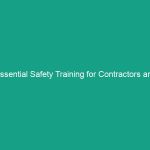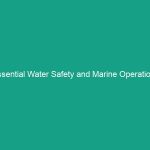Introduction
Good morning team,
Today, we’re going to discuss a critical topic that can make a significant difference in Workplace Safety: Must-Know Stroke Signs and Emergency Response Guidelines for Safety. Understanding the signs of a stroke and knowing how to respond could save someone’s life, whether it’s a colleague or even a loved one.
In an Environment where we often focus on physical Safety, it’s essential to remember that health emergencies like strokes can happen suddenly. Being prepared and knowledgeable can empower us to act swiftly when every second counts. Let’s dive into this vital subject!
Understanding Stroke Signs and Emergency Response Guidelines
A stroke occurs when blood flow to a part of the brain is interrupted or reduced, preventing brain tissue from getting oxygen and nutrients. This can lead to serious long-term disabilities or even death. Recognizing the signs of a stroke is crucial, as the quicker a person receives help, the better their chances of recovery.
Common misconceptions about strokes include the belief that they only happen to older adults or that they always present with severe symptoms. In reality, strokes can affect anyone at any age, and the symptoms can vary widely.
Key Hazards, Risks, and Safety Considerations
Recognizing the signs of a stroke is not just important for personal awareness; it’s critical in a workplace setting where colleagues may rely on each other. Some key Hazards and risks associated with strokes include:
- Delayed Response: Not recognizing the signs can lead to delayed medical care.
- Misdiagnosis: Symptoms may be mistaken for other conditions, leading to incorrect treatment.
- Lack of Awareness: Employees may not know the risk factors or signs to watch for.
Ignoring these signs can have real-world consequences, such as increased severity of the stroke, longer recovery times, or in the worst case, death. Hence, understanding these signs is crucial for everyone’s safety.
Best Practices, Procedures, & Actionable Advice
Here are some essential steps and practices to follow when dealing with potential stroke situations:
Recognizing the Signs of a Stroke
Use the acronym FAST to help remember the signs of a stroke:
- Face: Ask the person to smile. Does one side of the face droop?
- Arms: Ask the person to raise both arms. Does one arm drift downward?
- Speech: Ask the person to repeat a simple phrase. Is their speech slurred or strange?
- Time: If you observe any of these signs, call emergency services immediately.
In addition to these signs, be aware of other symptoms such as sudden confusion, difficulty walking, dizziness, or severe headache.
Immediate Steps to Take
If you suspect someone is having a stroke:
- Call 911 or your local emergency number immediately.
- Note the time when the symptoms first appeared; this information is critical for medical personnel.
- Stay with the person and keep them calm until help arrives.
- Avoid giving them food, drink, or medication.
These steps are vital in helping ensure the best possible outcome for the affected individual.
Real-Life Examples
Consider the following case study: An employee at a manufacturing facility suddenly slurred their speech and seemed confused. Another employee immediately recognized the signs of a stroke and called for help. Thanks to their quick actions, the individual received timely medical treatment and was able to recover significantly.
Regulations, Standards, and Compliance
Understanding stroke signs is not just a best practice; it aligns with health and safety Regulations. Under OSHA guidelines, employers are required to provide a safe workplace, which includes Training employees on recognizing health emergencies. Compliance with these regulations protects employees and fosters a culture of safety.
Incorporating stroke education into safety training sessions can equip employees with the knowledge they need to act swiftly in emergencies.
Employee Engagement & Discussion
Now that we’ve covered the essential signs and responses to a stroke, let’s open the floor for discussion. Here are some questions to consider:
- Have you ever witnessed a medical emergency at work? How did you respond?
- What challenges do you think we might face in recognizing stroke symptoms in our workplace?
- How can we improve our response protocols for health emergencies?
Your insights are valuable, and sharing experiences can help us all be better prepared.
Conclusion & Key Takeaways
In summary, recognizing the signs of a stroke and knowing how to respond can save lives. Remember the FAST acronym to identify symptoms and always act quickly when you suspect a stroke.
As we continue our work, let’s prioritize safety and be vigilant in our observations of one another’s health. Thank you for your attention and commitment to Workplace Safety. Together, we can create a safe and responsive environment for all.


